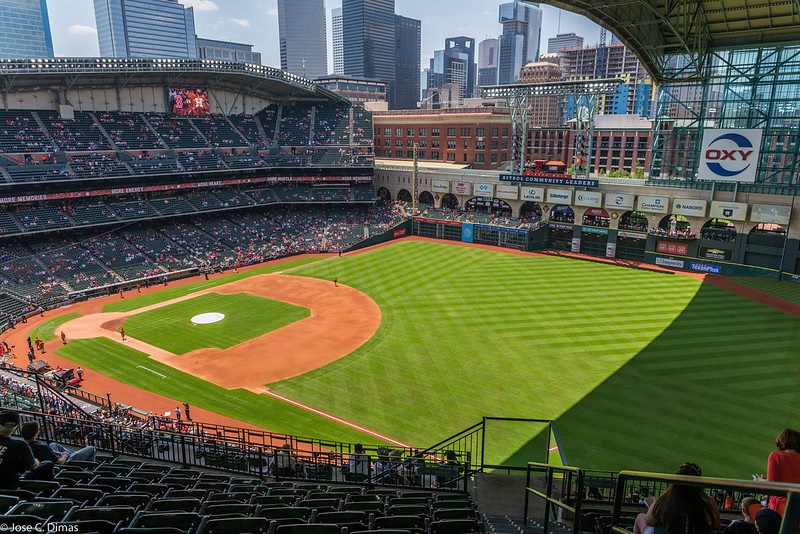
Image Credit: J Dimas (CC BY 2.0)
In Major League Baseball, there are "hitter's ballparks" and then there are "pitcher's ballparks". A hitter's ballpark is characterized as a ballpark that benefits hitter's more so than pitcher's and as a result, tends to give up more offense and home runs. On the flip side, a pitcher's ballpark tends to have extremely deep outfields and foul territories that keep the ball in play more often. Our staff decided to crunch some numbers and determine which Major League ballparks tend to give up the least amount of home runs season to season. Of the ballparks that made the list, let's just say that we weren't surprised in our findings and that the usual suspects comprised our list. See if your favorite team's stadium made the list!
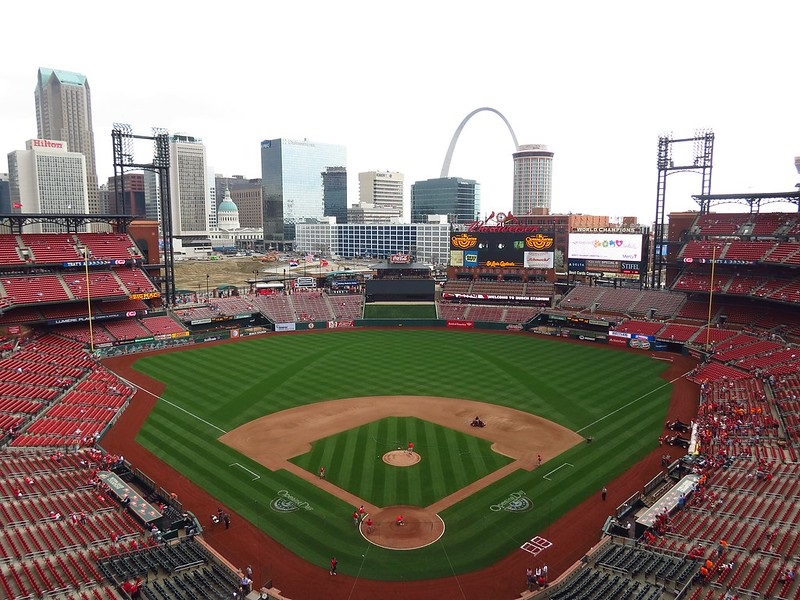
Image Credit: Redlegsfan21/Flickr (CC BY-SA 2.0)
6. Busch Stadium. Home of the St. Louis Cardinals.
Looking at Busch Stadium's dimensions on paper, I wouldn't deem it as a pitcher's ballpark at first glance. However, it has the deepest outfield in the National League Central division at 335 feet to left and right field and 400 feet to the center field wall. Overall, it's a very symmetrical ballpark that benefits neither left nor right handed sluggers and has 8 foot outfield walls all the way around. Busch Stadium gave up only 119 home runs during the 2015 MLB season or 1.47 home runs per game. Busch Stadium also has large foul territories which provides an advantage to the pitcher and defense.
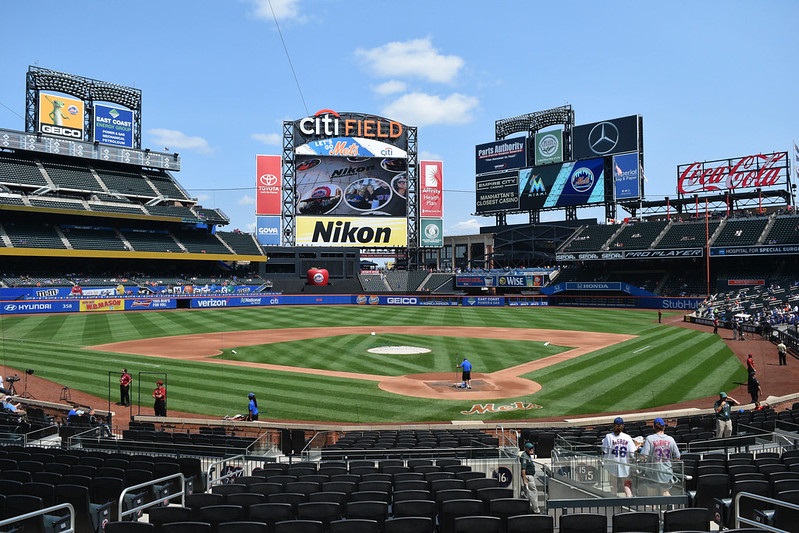
Image Credit: Ian D'Andrea (CC BY-SA 2.0)
5. Citi Field. Home of the New York Mets.
Since it's inaugural season in 2009, Citi Field has been known as a pitcher's ballpark. In fact, in 2014, the New York Mets shortened the ballpark's outfield fences for a second time after doing so in 2011. Hey, if you want to see home run balls really fly, go check out the tiny right field at nearby Yankee Stadium. The center field wall at Citi Field is a whopping 408 feet from home plate while left field is 335 feet away and right field is 330 feet away. During it's first three seasons of existence, Citi Field finished dead last in home runs in Major League Baseball. During the 2015 Major League Baseball season, Citi Field gave up 164 home runs or 2.02 home runs per game, a steady improvement in offense from the previous year. Only time will tell if the New York Mets decide to shorten the outfield fences a third time.
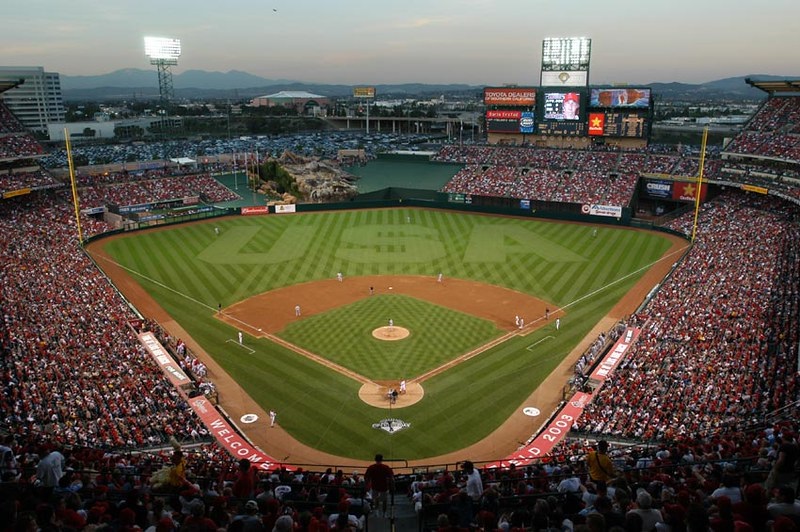
Image Credit: Curtis Kunst (CC BY 2.0)
4. Angel Stadium of Anaheim. Home of the Los Angeles Angels of Anaheim.
Angel Stadium of Anaheim is an extremely tough ballpark for left-handed hitters with the right field wall standing at 18 feet high. For the past five seasons, Angel Stadium has benefited the pitcher over the batter in every single category. It's dimensions are 330 feet at the left and right field walls and the center field wall is 400 feet from home plate. In 2015, Angel Stadium gave up 164 home runs or 2.02 home runs per home game. With a left field wall that only stands at 8 feet high, Angel Stadium provides a much better advantage to right handed hitters. As you can see in the photo above, the outfielders are required to play much further from the infield than they otherwise would in different ballparks.
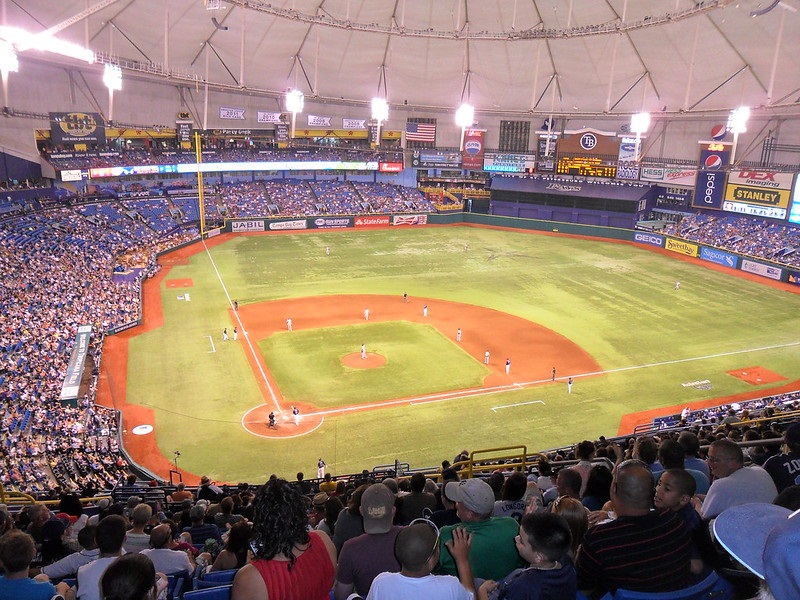
Image Credit: Arctic Whirlwind/Flickr (CC BY-ND 20)
3. Tropicana Field. Home of the Tampa Bay Rays.
Aside from being a nightmare of confusion with the rings of catwalks at the top of the ballpark, Tropicana Field isn't the place you want to visit to see baseballs launched into the seats. During the 2015 Tampa Bay Rays campaign, the stadium gave up 174 home runs which was good for 2.07 home runs per game, including three playoff games. It is possibly the toughest venue in the league for right handed sluggers and benefits the pitcher in virtually every category. The outfield walls are symmetrical and stand at 11 feet in height. The center field wall is 404 feet from home plate. Both the left-center and right-center field walls are a whopping 370 feet from home plate.
The permanent roof also doesn't allow the ball to travel more freely in the hot Tampa air. Tropicana Field is the only remaining domed ballpark in Major League Baseball but it's no secret that the Tampa Bay Rays would like a new home in downtown Tampa. If and when a new ballpark is constructed for the club, you can bet that it will have a retractable roof.
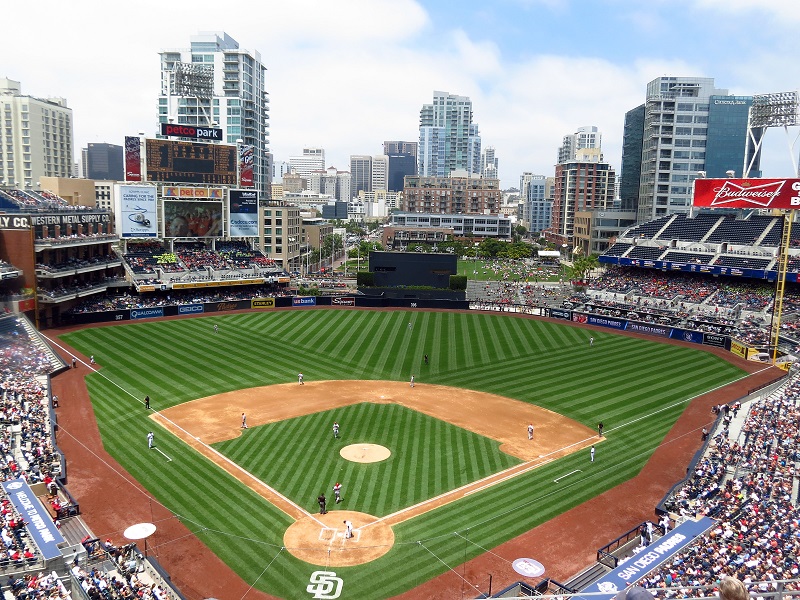
Image Credit: SD Dirk (CC BY 2.0)
2. Petco Park. Home of the San Diego Padres.
Petco Park is one of the most scenic and underrated ballparks in Major League Baseball. Unfortunately, the deep outfields don't provide a ton of eye candy in terms of home run balls. Year after year, Petco Park is at the bottom of Major League Baseball's list of home runs given up. During the 2015 Major League Baseball season, the ballpark gave up 166 home runs, good for 2.05 home runs per game which is much more than you probably anticipated. After the ball club moved the fences in slightly following the 2012 Padres season, the overall offense picked up.
The outfield walls at Petco Park are 8 feet high all the way around. The center field wall is 396 feet from home plate, left field is 336 feet away and right field is 322 feet away from the plate. If you're the San Diego Padres General Manager, one thing you always want at Petco Park is speedy and defensively sound outfielders. With outfielders such as Jon Jay, Melvin Upton Jr. and Matt Kemp now on the roster, the Padres outfield is set for years to come.
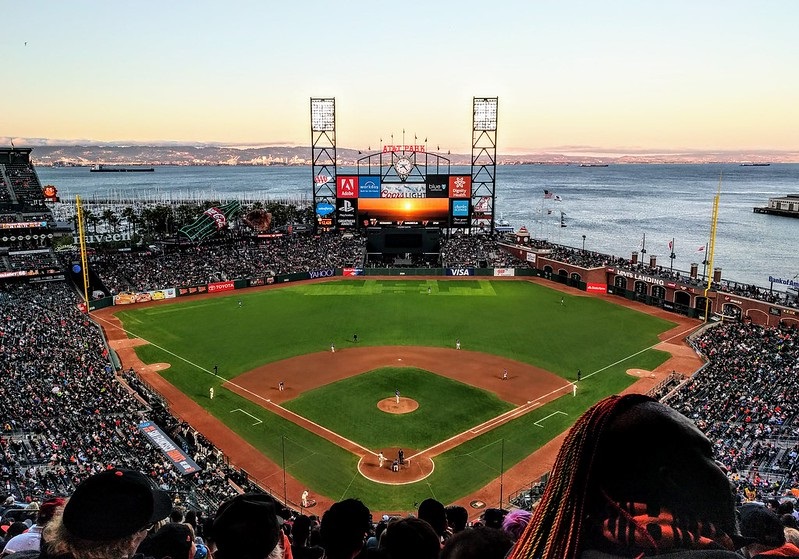
Image Credit: Travis Wise (CC BY 2.0)
1. Oracle Park. Home of the San Francisco Giants.
Is it just me or do the Major League ballparks in California make it hard for hitters to go yard? Oracle Park is a notoriously hard ballpark for left handed hitters. However, you've got to admit, it's awesome to watch home run balls land in the water at Mccovey Cove in deep right field. Oracle Park gave up 109 home runs during the 2015 season, good for 1.35 home runs per home game and a National League low.
Although right field is only 309 feet from home plate, the outfield wall is 21 feet high. Right field at AT&T Park also has a number of weird angles that make it hard for outfielders to field fly balls. The ballpark's left field wall is 339 feet from home plate while the center field wall is 399 feet from home plate. Right center field is extremely deep with the wall standing 421 feet from home plate. Overall, AT&T Park is one of the least symmetrical ballparks in Major League Baseball. The home run numbers Barry Bonds was able to post there as a member of the San Francisco Giants only adds to his legend.
References:
Related Articles
- Hitter's Ballpark vs. Pitcher's BallPark
- Which Major League Ballparks give up the most Home Runs?
- Are there bullet holes in U.S. Cellular Field, Comiskey Park's structure?
- Top 5 Best Neighborhoods in Major League Baseball
- How to Visit all 30 Major League Ballparks on a Budget
- Minor League Baseball's Top Ten Best Ballparks

